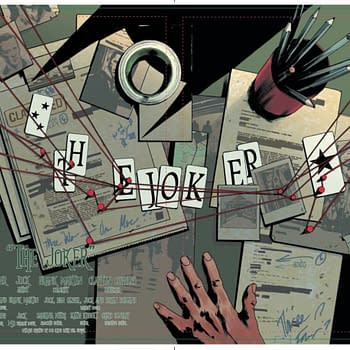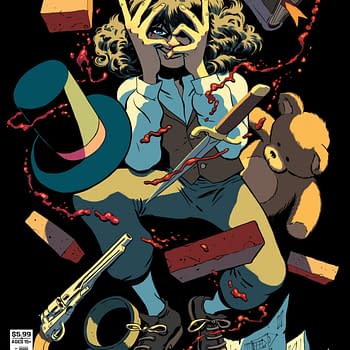Posted in: Recent Updates | Tagged: dennis o'neil, denny o'neil, how to write comics and graphic novels, How to write comics and graphic novels by Dennis O'Neil, university
How To Write Comics And Graphic Novels by Dennis O'Neil #6 – Whoever Knows Fear…

Every so often, I have the privilege of standing in front of some of the students of the excellent Upper Nyack Elementary School and telling tomorrow's savants, usually first graders, about creating characters. It pleases me to be able to say, without lying, that I am telling them what I tell the people who attend my college-level classes, that one way to create characters is for the writer to ask and answer four questions.
You may or may not be as smart as a first grader, or a university student, but in any case, a little exposure to those questions probably won't hurt you. So here they are:
*What does my character always want?
For Superman, they answer could be that he wants to honor the values he inherited from his foster parents, those loveable Kents. James Bond? A life of high adventure and sensuality and to serve her majesty. Sylvester the cat wants Tweety for dinner..
*Who or what does he love?
The answer doesn't have to be complicated, or romantic. Superman's truth, justice and the American way are just fine (though, these days, he might have a bit of trouble defining that last one.)
*What is he afraid of?
This is my favorite. I heard it asked and answered in a television interview with Robert Towne, who wrote what is, for my money, the best ever private eye movie, Chinatown. If you're familiar with the movie, you might be amused to ask yourself what scares Towne's hero, Jake Gittes (superbly portrayed by Jack Nicholson). Got it? On tenterhooks waiting for the answer? Okay, I'll take pity on you: according to Mr. Towne, Jake is afraid of looking like a fool.
*Why does he involve himself in extreme situations?
In a series, involving continuing characters, the answer usually involves what he does, either for a living or another reason that doesn't go away. This explains the video popularity of cops, private eyes, doctors, sometimes lawyers: their reason for getting themselves into life-and-death situations is built into who they are. It's what they do.
In the innocent and unsophisticated days of yore, the answer for superheroes was: Because he's the hero. I mean, he's wearing the costume, isn't he? And the guy in the funny suit is the superhero, unless he's the supervillain, but let's not go there. The genre has moved past that, though often not too far, and the costumed folk can be as motivated as Jake Gittes, or Hamlet. The "he's-the-hero" answer might still be sufficient answer for some kinds of stories, those intended for a young audience. I think it would also work elsewhere, provided the writer is willing to labor mightily to make the narrative interesting and witty.
I wish I could tell you that answering the above questions guarantees you a successful character creation, but I'm pretty sure you don't want me to lie. However…if you can't answer any of the questions with regard to your latest creation, you might want to take another look at your work. If you're still satisfied…well, as I keep insisting, there are no rules.
And, of course, having answered the questions still leaves you with just a tad of work to do before you've produced the next Harry Potter, such as deciding your character's gender, occupation, nationality, name, appearance and whatever makes this person really unusual, admirable–you know…special. This last one is especially important because, as you may have heard, character is action and what traits your protagonist uses to bring about the solution to his problems, and hence complete your plot, are usually what makes him/her interesting and worth paying attention to in the first place. The Fantastic Four's Thing might solve a crime by bashing someone while Agatha Christie's Hercule Poirot might solve the same crime by mentation–employing those "little gray cells" he was so fond of.
We'll return to character-building next time.
Dennis O'Neil teaches a ten week course on Writing Comics And Graphic Novels at the New York University. Classes are every Wednesday evening from 6.45pm to 9pm.. For further information, please call NYU's School of Professional and Continuing Studies at Studies at 212 9987200.











